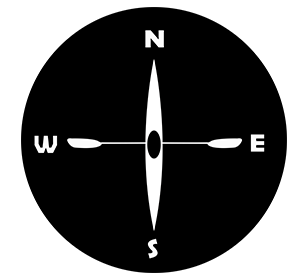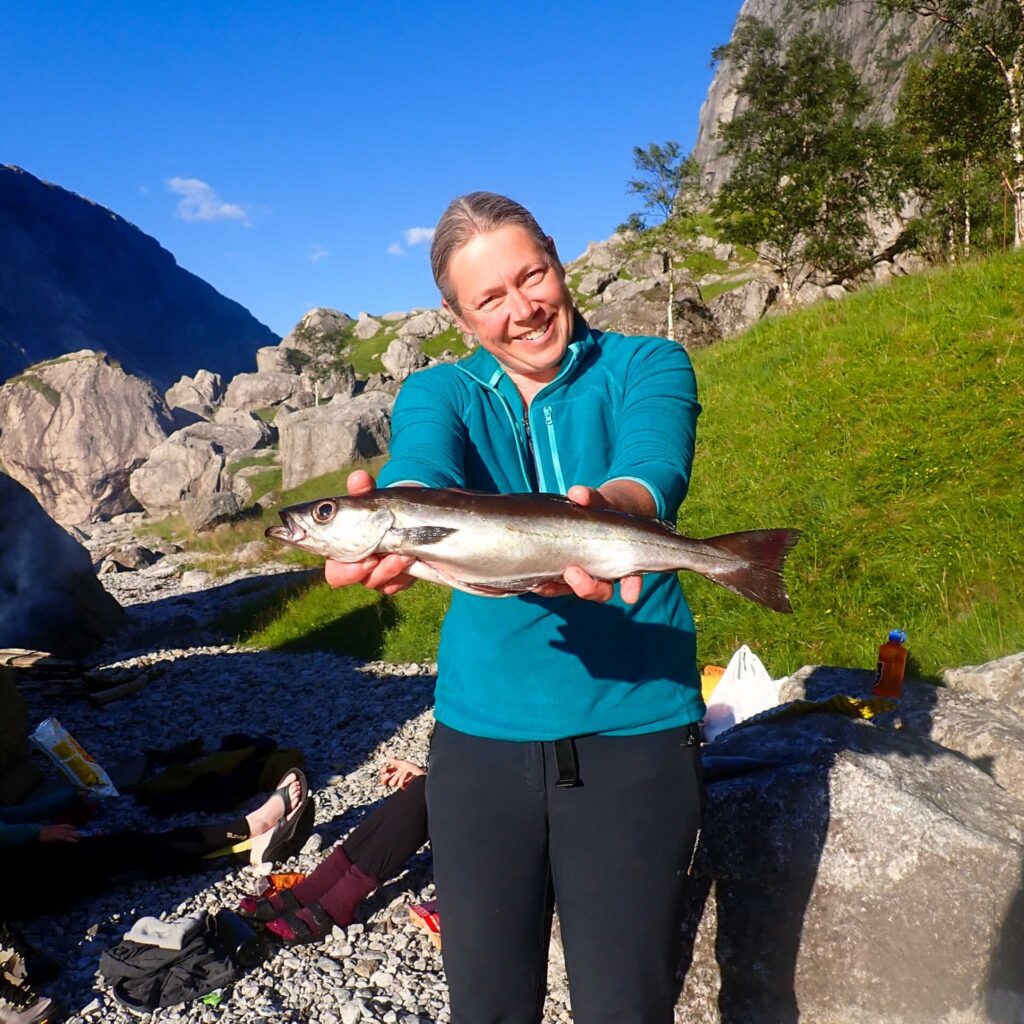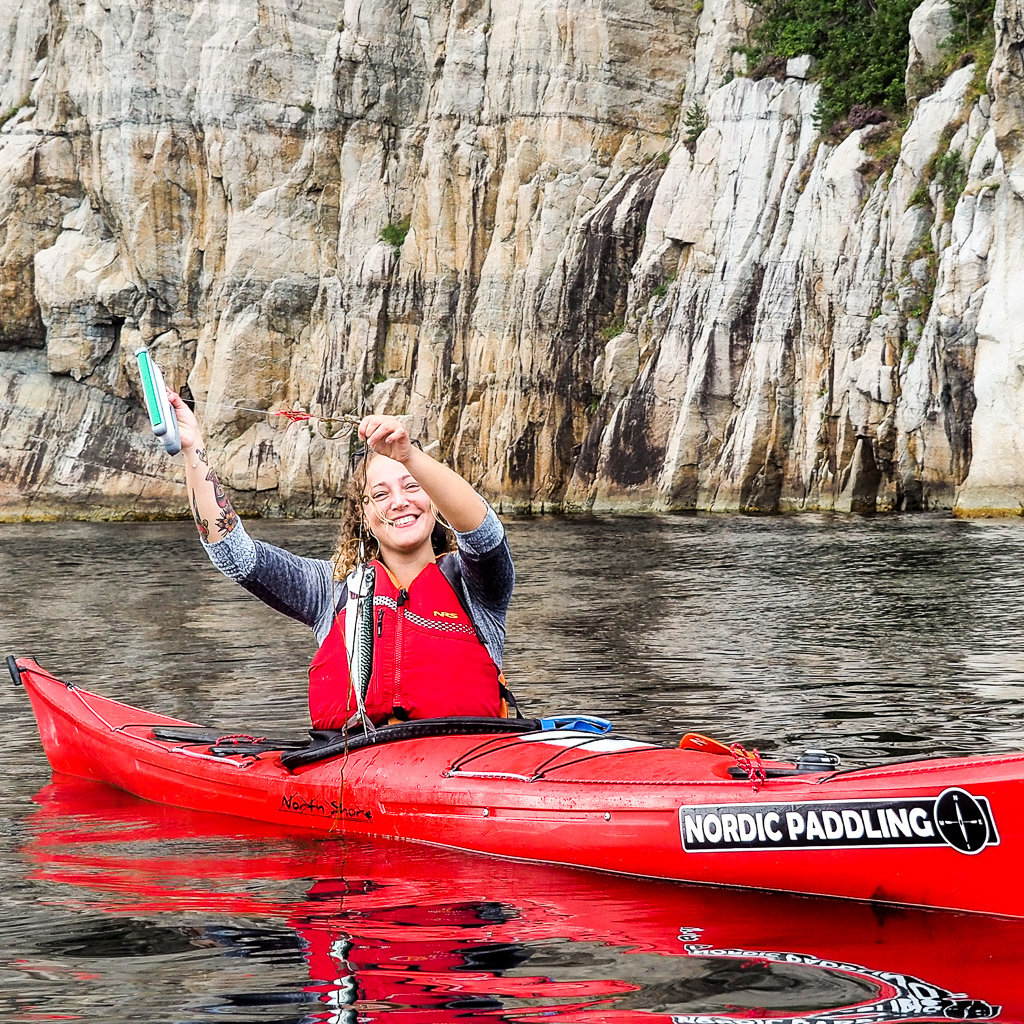This is a guideline about fishing in the Fjords in Norway.
We will break it down to fishing from the kayak and fishing from the shore. As fishing from shore is available at any time.
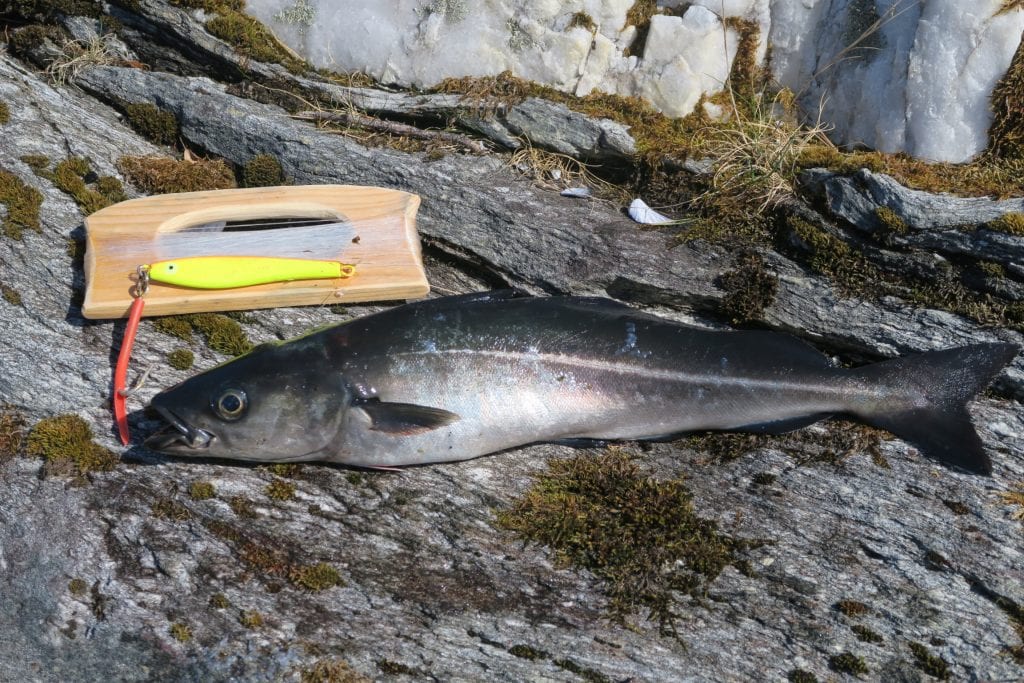
Do's
- Enjoy your time, fishing is a time to relax, enjoy the nature and be grateful for it even if it delivers you dinner or not.
- Go online and learn some fishing knots and practise them. Potentially tying a fishing knot in the kayak can be hard if you only done it once before.
- Be prepared to be able to kill, transport, clean and cook the fish you get. (We always carry a priest to kill the fish, plyers to be able to remove the hook from the fish, carabiners to hook dead fish on the deckline through their mouth and a proper filet knife)
- Once you catch a fish if you are more than 2h from shore, re-evaluate if you want to keep it or not. If you wait too long until you clean the fish the blood and guts in the fish can seep into the meat and make it taste not as good. (You can gut in on the kayak if you want and keep it between your legs in a plastic bag, that preferably does not leak blood into the cockpit)
Dont's
- You are not allowed to fish closer than 100m to freshwater streams that feed into the sea
- Do not use live bait(alive fish on hooks), it is unethical and can also result in accidentally catching a seal. Which would be very bad.
- Do not fish close to salmon farms.
- Do not trollfishing (pulling line behind kayak) in areas with a lot of boat traffic.
Fishing from a kayak
Knowing when to fish is key to success.
TIME
Fishing is time-consuming, so make sure you have enough patience and time to commit. While you might get lucky instantly, generally, you’ll need a few hours. Fish are also most active in the early morning and evening.
WEATHER
Fish are extremely aware of atmospheric pressure changes. When the weather changes rapidly—like before a storm—fish get confused and prioritize adjusting their body pressure over eating. The best time is typically a calm, cloudy day (low pressure), but sunny days (high pressure) can work too. The main thing to avoid is very windy conditions, as the fish likely won’t bite, and kayaking stability will suffer.
TIDE
Fish generally follow tidal patterns. A rising tide pulls more nutrition and baitfish into the fiord, this is making fish more active. This means you’re more likely to catch fish in faster currents (like behind rocks) rather than during total slackwater. While this is less critical in the Lysefjord than in places with stronger currents, it can still makes a difference.
Types of fish in the Fjord
Mackerel (Makrel)
Mackarel is active, fast and strong for it’s size. Usually found scanning coastlines in big bay areas for small fish. You will notice what looks like illogical current lines in the water if you are paying attention but that is really big stims of Mackarel moving around looking for food. Can also be found out in the middle of the fiord in superdeep water. Less likely but it is one of the few fish you can get by trolling in the middle of the fiord since they often swim quite close to the surface.
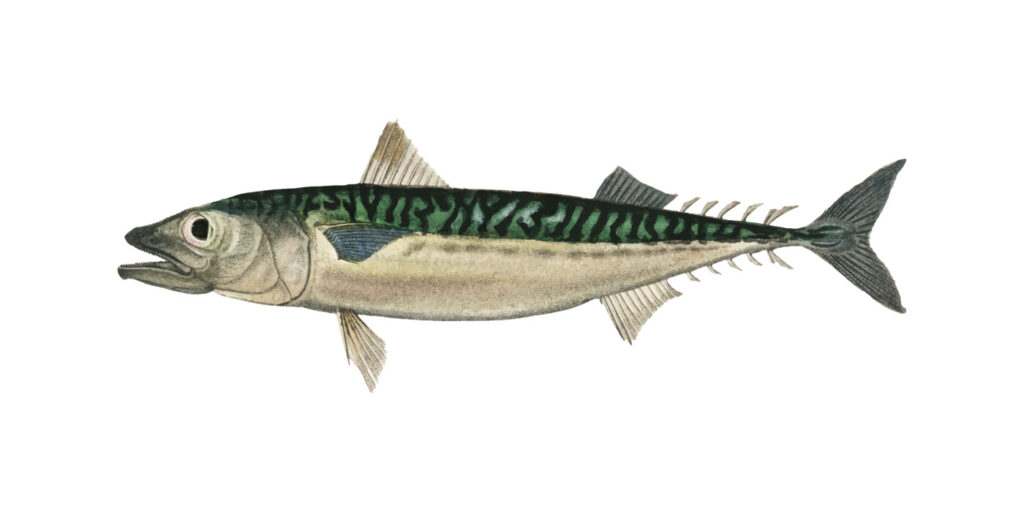
Cod (Torsk)
Fish that like to hang out at the bottom close to seaweed or steep cliffsides, generally quite slow. Normally hangs out in rocky areas with a lot of hiding opportunities.
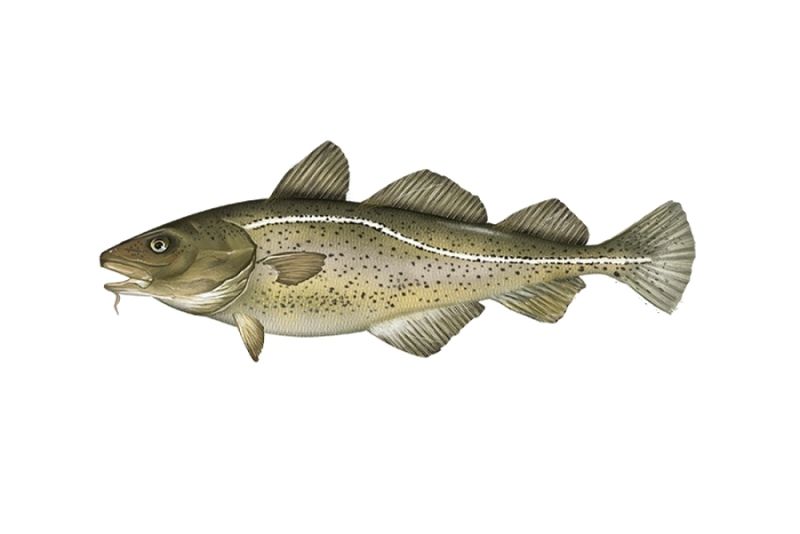
Pollach (Lyrtorsk)
Probably the most common fish to get in Lysefjord in Norway. Lives near and in slanting rocky hills going down in the water and also on steep cliffsides.
Generally quite similar places that Cod hangs out in but will go further out from their hiding in the rocks and hunt in open water which makes it easier to catch them with fishing rods from shore.
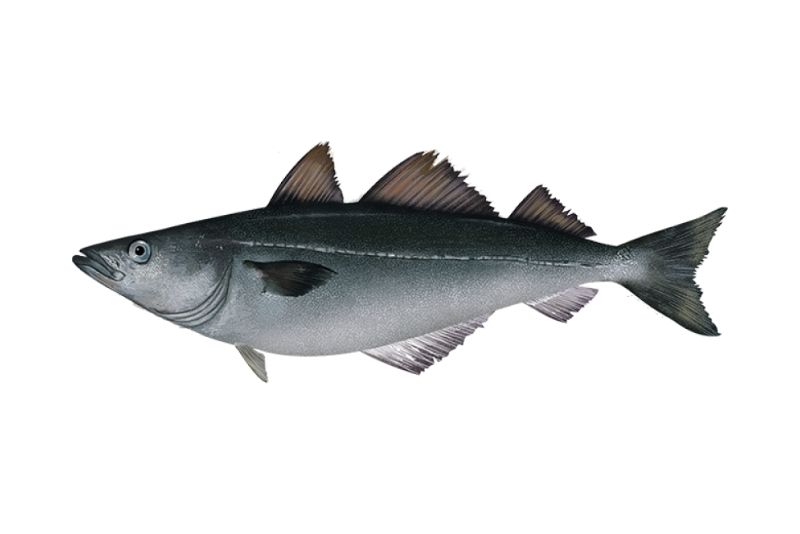
Atlantic salmon (lax)
Those are very difficult to catch in the ocean and are low in population, and should be carefully released back if caught unless you know the specific standards so that they are legal to take them with you.
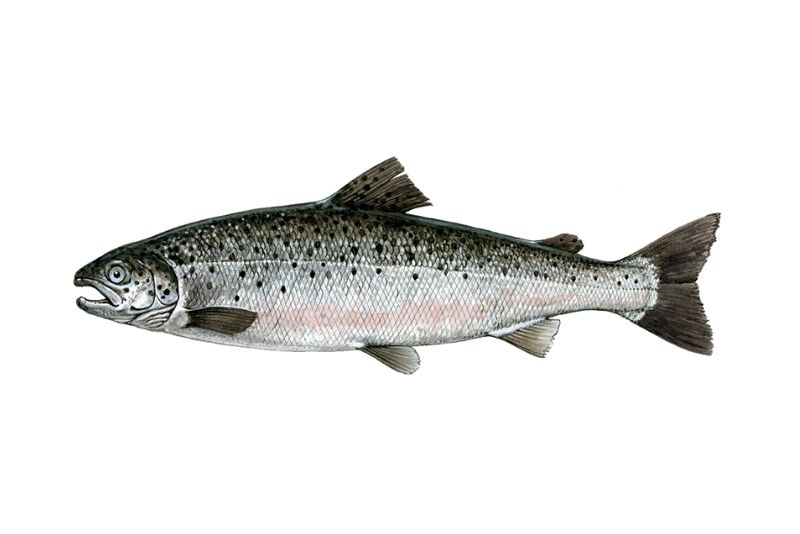
fishing from shore
To fish from shore, it is best to grab a rod that can cast 15-60g lures, preferably bought from a store. Keep costs down by starting with cheap 25g lures due to fishing gear gets expensive fast!
Invest more only once you know it’s your new hobby.
Once equipped, head to any rocky shoreline. The easiest fish to start catching are Pollach or Mackerel.
You have two main options for shore fishing:
Use a single lure, typically spoon-like or a smaller imitation of a fish.
Use a tackle similar to the handline rigs. This gives you a shot at catching up to six mackerel in a single cast if you hit a school.
fishing on water
- Jigging targets fish near the bottom, reefs, or underwater cliffs. From your kayak, aim for shallows or areas close to cliffs—avoid the deep fjord center. Use a heavy red weight or pilk bait (150-300g) with rubber worms or shrimp/spoon imitations. Technique: Let the line out fast in bursts, stopping to lift the baits, until you hit the bottom. Reel in and repeat. If no bites, move on.
Trolling is fishing while paddling. There are two ways:
Bottom Trolling (Slow): Use a red weight and jigging tackles. Paddle slowly, trying to keep the weight bouncing on the seabed. Do not use a pilk bait; it will snag.
Surface/Mid-Water Trolling (Fast): Use a lighter weight (75-125g pilk or red weight) and paddle faster. Use lures like silver spoons or small, shiny lures to target active fish near the surface (like mackerel).Casting from a kayak is the most difficult method, usually done with a handline or rod. While it allows for precision, reeling in a big fish on a rod from a kayak feels unsafe. It can work for specific surface targets like seatrout or salmon, but is best left for shore fishing.
As with everything else, how you fish depends on what you are fishing for.
Depending on how deep you want to fish and what kind of fish you are looking for, you will have to shift between these ways to find the best luck with catching fish.
